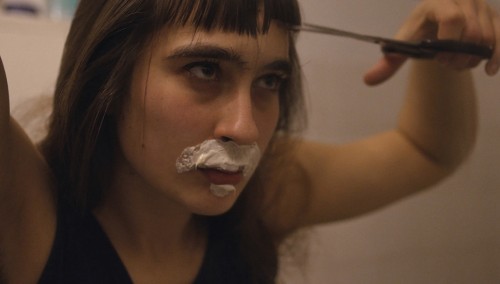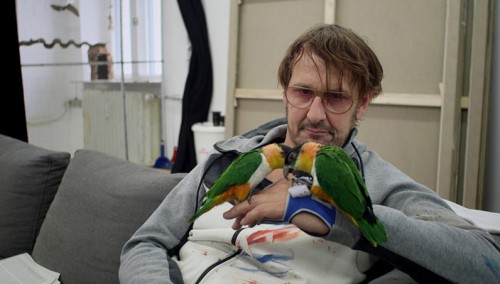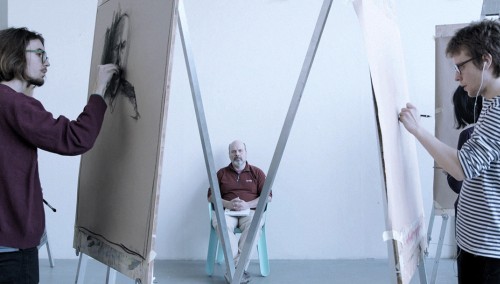This year the program section curated by Lina Dinkla (DOK Leipzig), dedicated to working conditions in 21st-century Europe, immerses itself into the everyday lives of artists.
Essay
ART IS BUT A JOB
Lina Dinkla, curator (Dok Leipzig)
As a working environment, art is a vague and ambiguous concept, and yet, everybody immediately has an idea in their head, an image of people at the canvas, with the photo camera, of an auction or stage. “The arts” also won’t be on the mind of but a few people when it comes to the term working worlds. But it is now in particular, with the experience of a pandemic behind us, that we want to dedicate ourselves to this complex as a professional field. For one thing, the “arts” have received new visibility over the past few years, through reports about disengaged musicians, painters with no exhibitions or films with no screenings. The closing of theaters and contact bans gave the downright precarious life realities of freelance artists with no safeguards a different kind of attention, and as a matter of fact, there was also the question: Do we still need art in that sense at all, that excessive offering made by people with creative jobs who have nothing to contribute in a crisis? Or do we, now more than ever? After all, one could experience first-hand that with many people, the prospect of a visit to the cinema or the museum or a concert, tightly packed with many others, developed an effect that can almost be called life-sustaining.
And in the end: Art is but a job – that pays the rent and fills the fridge. One film in the program expands the definition of art even further. Because haute cuisine also creates pieces of art, if the creation on the plate serves the purpose of a painting or sculpture more than that of food.
The connecting element of the four films is the beginning, the career start, the intentionally or casually chosen turn on the path after school. It is only in the rarest of cases that applying to art school later also means earning a living from making art; culinary training alone does not automatically lead to the world of award-winning cuisine. Nevertheless, each year countless young people apply to art schools and endure hard years of learning and traveling to perhaps one day join the few who made it.
Daniel Richter is one of those few playing in the top league, whose colorful and large-format canvases seem to have struck a chord and who was at the right place at the right time to meet people who would open the doors of the art scene for him.
It can be a long and tiring road to get to that point. It should come as no surprise that training and working conditions in the art scene too are even harder for women. Wishing to hold one’s own as a (young) woman here means finding oneself exposed to sexism and discrimination on a personal as well as a social-organizational level. Being a woman in a three-star kitchen or having children as a female artist are moments that make us aware of how woefully long the road to equal recognition and true equality still appears to be.
And in the end: Art is but a job – that pays the rent and fills the fridge. One film in the program expands the definition of art even further. Because haute cuisine also creates pieces of art, if the creation on the plate serves the purpose of a painting or sculpture more than that of food.
The connecting element of the four films is the beginning, the career start, the intentionally or casually chosen turn on the path after school. It is only in the rarest of cases that applying to art school later also means earning a living from making art; culinary training alone does not automatically lead to the world of award-winning cuisine. Nevertheless, each year countless young people apply to art schools and endure hard years of learning and traveling to perhaps one day join the few who made it.
Daniel Richter is one of those few playing in the top league, whose colorful and large-format canvases seem to have struck a chord and who was at the right place at the right time to meet people who would open the doors of the art scene for him.
It can be a long and tiring road to get to that point. It should come as no surprise that training and working conditions in the art scene too are even harder for women. Wishing to hold one’s own as a (young) woman here means finding oneself exposed to sexism and discrimination on a personal as well as a social-organizational level. Being a woman in a three-star kitchen or having children as a female artist are moments that make us aware of how woefully long the road to equal recognition and true equality still appears to be.




